This is the last Panasonic plasma we’ll ever review.
While you mull over that statement, let us explain what Panasonic’s decision to finally pull the plug on its plasma display panel (PDP) business means to us. Every year around March, we look forward to getting our hands on the company’s new range of Viera plasma TVs. Not only are these displays usually the first to hit the market for the year ahead among major TV brands, they also typically set the benchmark for other HDTVs to follow. As such, the key talking point among fans of Panasonic plasmas is invariably “What improvements are there over last year’s models, if any?”.
But that’s not going to happen this year. True to word, Panasonic’s booth at CES 2014 in Las Vegas last month was conspicuously devoid of plasma televisions. The Japanese manufacturer’s annual European convention, traditionally held each February, will instead take place in late March this year. And the traffic surge that this website enjoys every Spring as we review different Panasonic PDP series will be no more.
As a final farewell, we wanted to do a fitting tribute worthy of what has been a long heritage of TVs par excellence, in the same vein as The Verge‘s groundbreaking exclusive on the equally groundbreaking Google Glass, or the wonderfully animated review of the Microsoft Xbox One put out by the talented team at Polygon. But we are a niche site with limited resources, and so the only (ok, easiest) way we can think of to make this Panasonic TX-P42GT60 review stand out from all our other HDTV reviews is to rely on words and words alone to convey our thoughts on its picture quality. No colourful charts; no tabulated data.
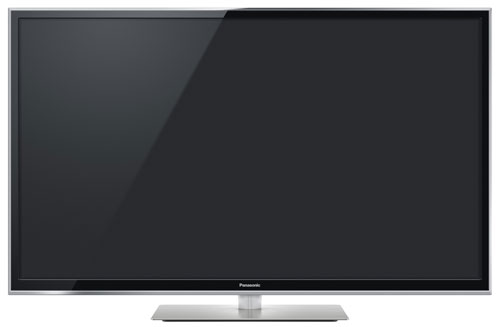
The last of the soon-to-be-extinct species under examination today is the TX-P42GT60B, the 3-pin-plug British version of the 42-inch model within the Viera GT60 range. It features a “Hexa-core” video processing engine, THX certification, ISF calibration modes, active 3D capability, USB-HDD recording, WiFi connectivity, and the company’s “My Home Screen” Smart TV platform.
After going (mostly skipping) through the 15-step setup process, we immediately put the Panasonic GT60 into its [THX Cinema] mode: this is the picture preset that has been tuned and subsequently approved by world-renowned audio-visual quality assurance organisation THX, and therefore logically should provide the most faithful video reproduction.
And so it proved: the accuracy of the TX-P42GT60’s colour palette was truly a sight to behold, injecting a breathtaking amount of realism into all sorts of material we threw at the television. There’s a sheer vibrance to the colours that’s beyond the reach of any LCD-based displays we’ve tested to date, coming across as natural and authentic yet never overblown or gaudy.
Much of this superior colour rendition was owed to the Panasonic GT60’s class-leading black-level response, which is among the deepest we’ve observed on any flat-panel televisions of this screen size. Of course, it’s eclipsed by the true 0 cd/m2 blacks seen on OLED TVs like Samsung’s KE55S9C or LG’s 55EA980W, but these are neither going to be affordable nor available in 42in size anytime soon.
As we’ve analogised time and again (mostly in context of plasmas), such inky blacks act as a near-perfect canvas for colours to blossom with unadulterated richness. Because the baseline black luminance is automatically added to every single hue that needs to be displayed on screen, any greyness in the blacks – which, we must stress, certainly wasn’t the case here – will desaturate and wash out the colours, resulting in a less compelling picture. This is why we are so saddened by plasma’s seemingly inevitable demise, so excited with OLED technology, and so dismayed at a future dominated by LCD televisions, 4K or not.
Panasonic provides a full suite of calibration controls including 10-point white balance and a 3-axis colour management system (CMS) for advanced users and professional calibrators to improve the image on the GT60 even further. On our review sample, the out-of-the-box greyscale and colours were already quite accurate; the biggest improvement we obtained was by calibrating gamma from the original measured value of 2.2 to the ITU-recommended 2.4 standard which delivers much more “pop” befitting a display of this quality. Even in this configuration, we never found shadow detail to be lacking, due to Panasonic PDPs’ hard-coded propensity to brighten near-black point gamma.
Like most plasma TVs, the TXP42GT60’s motion clarity was superb, delineating moving objects with minimal blur without needing to resort to frame interpolation technology. We did notice some dynamic false contouring (DFC), i.e. the breaking up of what should be a smooth gradient on moving objects into distinct “steps” (also known as posterization or banding), particularly on low-bitrate broadcast programmes. This can be attenuated to a large extent by engaging [Intelligent Frame Creation] – we found that the “Min” setting worked well without introducing significant interpolation artefacts or soap opera effect to 24p film material.
The video processing on the Panasonic TX-P42GT60B ranked among the very best on the market. Upscaling from standard-def sources to the 1920×1080 panel (a phrase we’ll probably use less and less in the coming months, what with the industry’s inexorable push towards 4K Ultra HD) appeared clean and crisp, fully capturing all the details in the SMPTE RP-133 test card with only very minor ringing. Video mode deinterlacing was first-rate: jaggies in the HQV Benchmark disc’s various test patterns were smoothened to the point of non-existence. The television also correctly identified and processed 3:2 and 2:2 interlaced SD content as long as [Film Cadence Mode] was enabled.
The TX-P42GT60’s closest competitor is Panasonic’s own step-down 42″ ST60 model whose major weakness was its relatively high input lag. We’re pleased to report that the Viera GT60 fared much better in this department presumably owing to the company’s in-house Hexa processor, clocking an average input lag of 24ms in [Game Mode] using the traditional high-speed camera/ cloned display method, or a higher 42ms as reported by the Leo Bodnar device which we think is harsher on plasma TVs.
Subjectively, gaming felt as fluid and responsive as on previous Panasonic plasmas, and the icing on the cake is that [Game Mode] is available as a setting which can be engaged in any picture preset, instead of being hived off as a separate preset (as is usually the case on most HDTVs), meaning that gamers can now get BOTH accurate images and zippy responsiveness at the same time.
The Panasonic Viera TX-P42GT60B is the best sub-50in flat-screen TV we’ve tested to date as far as picture quality is concerned, and – barring a miraculous breakthrough in large-sized OLED display technology in terms of yield and pricing – is likely to remain so for the next few years, because we just don’t see any LED LCD outperforming the set’s insane black level, naturally high motion resolution and wide viewing angles in the future.
But the market has spoken, and the public overwhelmingly prefer the ultra-slim form factor, brighter picture and lower power consumption of LED LCD televisions. According to market analysis firm DisplaySearch, PDP accounted for only 5.1% of worldwide TV shipments during the second quarter of 2013, and this figure will shrink even more following Panasonic’s exit. We, and many other technical reviewers, have utterly failed in educating the masses and stemming the LCD tide despite banging on about plasma’s superior image quality, and it’s a sobering reminder that sometimes being the best just isn’t good enough.

P.S. Ok so we changed our mind. Have a look at the following pre- and post-calibration charts we extracted from the Panasonic TX-P42GT60, and shed a tear for these top-notch displays that once walked the earth.
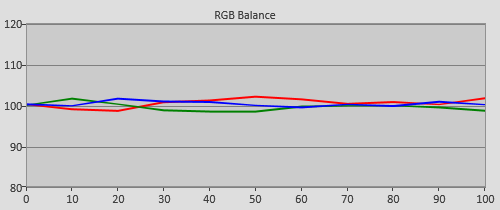 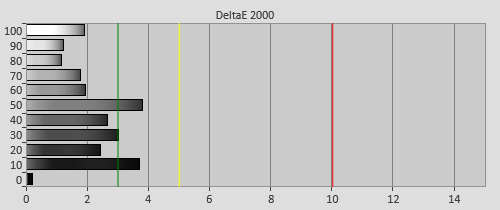 |
| Pre-calibration RGB tracking and delta errors (dEs) |
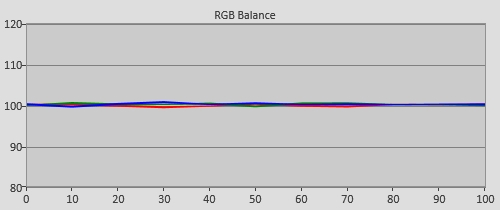 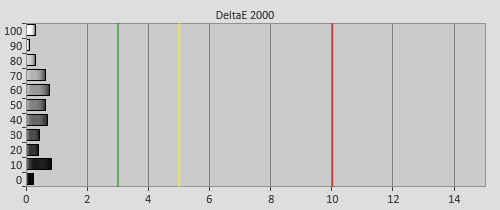 |
| Post-calibration RGB tracking and dEs in [Professional] mode |
![Pre-calibrated Gamma tracking in [THX Cinema] mode](https://www.hdtvtest.co.uk/news/wp-content/uploads/2018/04/hdtv_Panasonic-TXP42GT60_pre-gamma.png) | ![Post-calibrated Gamma tracking in [Professional] mode](https://www.hdtvtest.co.uk/news/wp-content/uploads/2018/04/hdtv_Panasonic-TXP42GT60_post-gamma.png) |
| Pre-calibration gamma tracking (2.19) | Post-calibration gamma tracking (2.39) |
![Post-calibration colour saturation tracking in [Professional] mode](https://www.hdtvtest.co.uk/news/wp-content/uploads/2018/04/hdtv_Panasonic-TXP42GT60_post-strack.jpg) |
| Post-calibration colour saturation tracking |
![Post-calibration colour saturation delta errors in [Professional] mode](https://www.hdtvtest.co.uk/news/wp-content/uploads/2018/04/hdtv_Panasonic-TXP42GT60_post-strack-de.png) |
| Post-calibration colour errors (<3 not appreciable to the eye) |